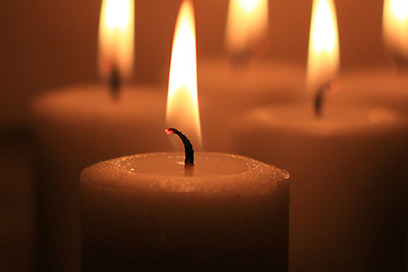
Rock ‘n’ Roll Trivia: Eric Clapton’s Persian rug may carry hidden message
by John Robinson
Q: I noticed while watching an Eric Clapton DVD there is a large ornate rug on the stage floor which looks like the same rug I noticed in other videos. There must be some significance to the rug. Can you find out what it is?
A: That large Persian rug is a favorite of Eric’s and I think I may have found out why. Back when George Harrison was married to Patti Boyd, Clapton kept flirting with her, trying to get her to “be” with him. She kept turning him down, which depressed him to a point where most of the music on his next album, “Layla and Other Assorted Love Songs,” was based on his feelings for Patti. The song “Layla” was based on “The Story of Layli and Majnun,” written by Persian poet Nezami Ganjavi. The story tells about a man named Majnun who fell in love with an unavailable woman named Layli…and Majnun goes crazy when he realizes he never can have her. Clapton found this story to be a parallel to how he felt about Patti (they eventually DID marry but are now divorced). So, I’m thinking that this Persian tale prompts Eric to use his Persian rug onstage as sort of an homage to his love for Patti.
Q: Why were there so many songs depicting women as “evil”? You know, like “Evil Woman,” “Witchy Woman,” etc.?
A: Because in the first couple of decades of rock and roll, the songwriting was male-dominated. So, we heard songs about “terrible” women, in songs like “The Naughty Lady of Shady Lane” (Ames Brothers), “Mean Woman Blues”(Roy Orbison), “Moody Woman” (Jerry Butler), “Evil Woman” (Electric Light Orchestra), “Green-Eyed Lady” (Sugarloaf), “Evil Woman (Don’t Play Your Games With Me)” (Crow), “Devil Woman” (Marty Robbins) and “Mother-In-Law” (Ernie K-Doe). There also were many songs about women who dabbled in the occult, like “Devil Woman” (Cliff Richard), “Black Magic Woman” (Santana), “Gypsy Woman” (Impressions, Brian Hyland), “Witchy Woman” (Eagles), “Voodoo Woman” (Bobby Goldsboro), “Swamp Witch” (Jim Stafford) and even “Dark Lady” (Cher). Occasionally, you’d hear records about women by women themselves, like “Bad Girls” (Donna Summer) and “Lightning’s Girl” (Nancy Sinatra). But since the ’70s, more and more female singer/songwriters have gotten back at the guys and made history a little more even, beginning with songs like “I Am Woman” (Helen Reddy), “You’re So Vain” (Carly Simon) and many more.
Q: Who actually came up with the “Batman” TV show theme?
A: That was composer Neal Hefti, who also was a jazz trumpeter, songwriter and arranger. He began composing while he was a trumpeter for Woody Herman. When he left Herman in 1946, Hefti mainly wrote and arranged, leading his own bands every once in a while and arranging for Harry James and Count Basie. When the 1960s arrived, he wrote and arranged many TV and movie themes; two of his most popular TV themes were for “The Odd Couple” and “Batman.” Hefti took his single, “Batman Theme,” to No. 35 in 1966, but that same year, The Marketts charted higher with their version (No. 17). Hefti’s Batman theme always will be linked with that character and has been used in many other Batman-type records.
Q: Back in the 1970s there used to be free concerts at Ella Sharp Park every Sunday in the summer. My sister remembers seeing Alice Cooper and I’m sure we saw Bob Seger and Mitch Ryder. Do you know who else played there? I’m sure some became famous afterward like Bob Seger. Do you know what years they held these concerts?
A: Almost all the bands that played at Ella Sharp were from Michigan, like Cooper, Seger and Mitch Ryder. Others who played there that went on to greater fame include The Knack, Funkadelic (with George Clinton) and Commander Cody. Others who appeared include Dennis Coffey, Frijid Pink, Teegarden & Vanwinkle, The Up, Fruit, Catfish, Third Power, The Merrie Motor Company and many others. The Ella Sharp free concerts lasted from 1969-1971.
Q: Rod Stewart recorded a ballad “Waltzing Matilda” on one of his CDs. I think it was his “Rod Stewart Unplugged” album. If my memory serves me, waaaaaay back, Mitch Miller and his choir also had a “Waltzing Matilda” song in an upbeat version with some different words. I recall that there was a story about Waltzing Matilda from Australia. Can’t remember but the Waltzing Matilda had some significance there.
A: First of all, “Waltzing Matilda” is Australia’s best-known song and was suggested to become the country’s national anthem. Rod Stewart did indeed record a version of “Waltzing Matilda” on his album “Rod Stewart Unplugged” under a different title, “Tom Traubert’s Blues.” And Mitch Miller produced a version, for Australian singer Diana Trask, found on her 1961 album “Diana Trask On TV” on Columbia Records, with backing from Miller’s singers and orchestra. Now, what actually does “waltzing matilda” mean? The term waltzing, from the German term auf der Walz, (meaning to travel while learning the carpenter trade) and matilda is another word for a traveler’s bundle. So waltzing matilda basically means to travel the countryside with a bundle of belongings strapped to your back. The melody goes way back and is tied in with a few songs: “When Sick, is it Tea You Want?” (1798), “Go to the Devil and Shake Yourself” (sometime before 1812), “The Penniless Traveler” (1850) and the Scottish tune “Thou Bonnie Wood of Craigielea” (lyrics by Robert Tannahill in 1805 and music added by James Barr in 1818). In 1895, the Australian poet Banjo Paterson was staying at a bush station in Queensland when someone played “The Craigielea” for him. He liked the tune so much, he decided to write lyrics for it. Christina Macpherson also heard “Craigielea” and wrote a similar melody. This melody and Paterson’s lyrics became “Waltzing Matilda” and first was published in 1903.
 John Robinson grew up in Stockbridge and graduated from Stockbridge High School in 1969.
John Robinson grew up in Stockbridge and graduated from Stockbridge High School in 1969.
He’s been an author, TV host, columnist, actor, producer, emcee and radio broadcaster. Robinson’s favorite music of all time includes surf, psychedelia, garage bands, Motown and just plain ol’ good-time rock ‘n’ roll. To read more rock ‘n’ roll trivia, “Paranormal Michigan” stories, and lots more, check out Robinson’s books on his author page at facebook.com/johnrobinsonauthor.


